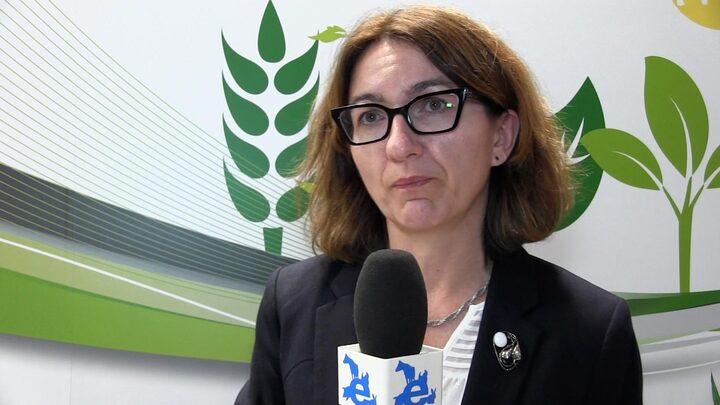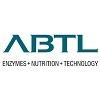Explore all the information on
Poultry nutrition - Other additives
Alternative feed additives have promising importance in broiler production due to the ban on the use of certain antibiotics. The most used antibiotic alternatives in broiler production are phytogenics, organic acids, prebiotics, probiotics, enzymes, and their derivatives. Antibiotic alternatives have been reported to increase feed intake, stimulate digestion, improve feed efficiency, increase growth performance, and reduce the incidence of diseases by modulating the intestinal microbiota and immune system, inhibiting pathogens, and improving intestinal integrity. Simply, the gut microbiota is the target to raise the health benefits and growth-promoting effects of feed additives on broilers. Therefore, naturally available feed additives are promising antibiotic alternatives for broilers.
Mr. Suresh Chitturi, Vice Chairman & Managing Director of Srinivasa Farms, shares his perspective on the critical role elite genetics play in India’s poultry production. He also highlights the key opportunities ahead and the challenges the industry must address to sustain its growth. ...
Comments : 0
Recommendations: 2
Magicoh Pellet Binder provides a cost-effective solution to solve your binding problems. In fish/shrimp/prawn feed, it’s used to improve water stability and durability, and in poultry and piglet feed, it can enhance PDI and reduce the production of dust. It helps you produce a pellet rather than dust. Contact me for more information: Email: jzfong@de-mark.com WhatsApp: +8613588089289 WeChat ID: a97896085a ...
Comments : 0
Recommendations: 0
John Boney (Penn State University) discusses performance, body weight, and feed conversion ratio when feeding mash compared to pellets in this Engormix interview during IPPE 2025 in Atlanta, USA....
Comments : 3
Recommendations: 1
Respected Srs, greetings. I have high water PH in my farm and I used citric acid as acidifier to reduce the PH .Has the acidified water by citric acid any effect on live vaccine that sometimes I used . ...
Comments : 8
Recommendations: 1
Michael Joseph, Assistant Professor & Extension Specialist at NC State University, discusses the potential and caveats of using alternative protein sources in animal production during this Engormix interview. ...
Comments : 0
Recommendations: 0
In this Engormix interview, Michael Joseph, Assistant Professor & Extension Specialist at NC State University, discusses the use of various combinations of feed additives to maintain gut health and how technology and precision nutrition can contribute. ...
Comments : 0
Recommendations: 0
Michael Joseph, Assistant Professor & Extension Specialist at NC State University, explains how the food and feed industries are producing more with less, finding strategies to become more adaptable and efficient, in this Engormix interview. ...
Comments : 0
Recommendations: 0
Introduction Protein besides biologically active compound in the body exists as enzymes & hormones, also plays important role in physiology of living organisms. Soybean meal (SBM) is complete conventional protein source with well-balanced amino acids profile. On the other hand due to increase in prices of SBM, alternative sources like groundnut cake, sunflower meal, guar meal, rapeseed cake, cotton seed cake, copra meal, maize gluten, DDGS etc. are used, but they have...
Comments : 4
Recommendations: 0
Necrotic Enteritis in the Post-AGP Era: A Complex Multifactorial Challenge
The restriction on antibiotic growth promoters (AGPs) in the broiler industry has led to a significant resurgence of enteric diseases, particularly necrotic enteritis (NE). This complex disease, estimated to cost the global industry USD 6 billion annually, requires a deeper understanding to develop effective control strategies. A recent review by Shahna Fathima, Walid Ghazi Al Hakeem, Revathi...
Comments : 1
Recommendations: 0
José Henrique Stringhini (Federal University of Goiás) comments on the advantages of butyric acid compared to other additives and offers practical recommendations for its use in water or feed, during this Engormix interview....
Comments : 2
Recommendations: 3


Feed Granulometry and the Importance of Feed Particle Size in Layers
Suggested link
Mike Persia (Virginia Tech) talks about the benefits of Direct-Fed Microbials (also Sulfur Amino Acid supplementation) to help manage the adverse effects of heat stress, in this interview during IPPE 2023 in Atlanta, USA....
Comments : 69
Recommendations: 9
Compilation of a project KEY INFORMATION A series of 5 commercial feeding trials was performed from which 4 trials took place on commercial broiler farms growing between 300,000 and 420,000 broilers per cycle. Dietary protein was...
Comments : 28
Recommendations: 5
1. Introduction The production of black soldier fly larvae (Hermetia illucens, BSFL) has been established globally in recent years. Advancements in production and processing technology have facilitated the large-scale rearing of BSFL, which can be attributed to the insect’s affinity to thrive in a wide array of organic substances [1]. These can include by-products from grain, oil seed and food processing, food waste and by-products from animal processing, and even manure...
Comments : 0
Recommendations: 0
The UGA International Poultry Short Course provides a comprehensive overview of modern poultry production.
It is intended for those individuals with limited knowledge of poultry, as well as those who might have considerable experience in one area of poultry production but would like to have a better...
Comments : 0
Recommendations: 0


Enhancing Egg Production: Key Factors Influencing Chicken Health and Yield
Suggested link
by Benjamin Geist
With just over 120 days until APSS 2026, planning for the 37th annual Australian Poultry Science Symposium is progressing smoothly. Next year’s event will return to the University of Sydney Business School – Belinda Hutchinson Building (H70) on the Camperdown Campus, and we’re excited to once again welcome delegates for 2.5 days of presentations, posters, networking, and industry engagement.
The theme for APSS 2026...
Comments : 0
Recommendations: 0
Yeast β-glucans consist of a β(1,3)-linked glucose backbone, with β(1,6)- linked side chains at different interval and sizes along the backbone. They are recognized by several receptors present on the surface of innate immune cells, such as the Dectin-1 receptor. Previous research done with crude yeast cell wall (YCW) extracts, have led to the description of β-glucans as immunestimulant molecules resulting in a strong activation of macrophages that secrete high levels of...
Comments : 0
Recommendations: 0
1. Introduction There is considerable interest in the successful development of low protein diets for broiler chickens, which axiomatically contain high inclusions of supplemental amino acids. This is because low protein diets have the potential to generate economic, environmental and bird welfare advantages. Formulation of low protein diets are usually achieved by decreasing...
Comments : 1
Recommendations: 2
1. Introduction Influenza A virus (IAV) is an enveloped RNA virus, a member of the Orthomyxoviri dae family, and is known to infect humans, mammals, and birds [1]. The virus is subtyped based on the antigenic cross-reactivity and sequence identity of two surface glycoproteins, namely, hemagglutinin (HA) and neuraminidase (NA) [2]. Excluding the recently identified H17N10 and H18N11 in bats, 16 HA and 9NAIAV subtypes have been identified in mammals and birds to date...
Comments : 1
Recommendations: 1
.jpg&w=3840&q=75)

Reliable and accurate nutritional data of heat processed ingredients with AMINONIR® RED
Suggested link
In commercial egg production, production traits such as bodyweight (BW), feed intake and efficiency, and egg quality are targets that are critical to profitability. Assessment of average BW and uniformity are relatively straightforward measurements. Furthermore, it is well known that achieving target BW for the breed standard and minimising BW variation are key to producing greater egg mass and egg quality. It is more difficult to get an understanding of the variation in feed intake, egg...
Comments : 0
Recommendations: 0
I. INTRODUCTION Low-protein diets for broiler chickens axiomatically contain high inclusions of supplemental amino acids and have the potential to generate economic, environmental and bird welfare advantages. Low-protein diets are usually formulated by reducing soybean meal inclusions and increasing inclusions of a range of supplemental amino acids. An alternative approach was adopted in the present study where dietary protein levels were reduced by the partial replacement of maize...
Comments : 0
Recommendations: 0



















.jpg&w=3840&q=75)















